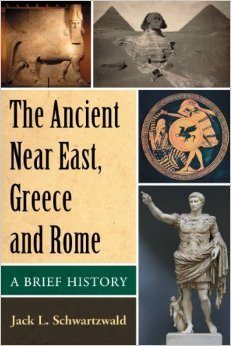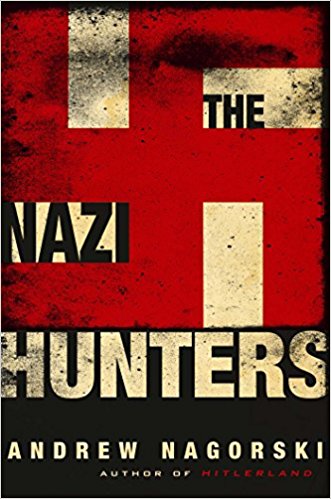The Ancient Near East, Greece and Rome, A Brief History
When it comes to reading textbooks or primers on particular subjects, the key really is that the writing keep the reader’s interest, otherwise their mind is likely to wander and/or become bored with the subject matter they are reading about. Thankfully, Jack L. Schwartzwald’s brief history on the ancient Near East, Greece and Rome has an interesting and engaging voice that grabs the reader’s attention right from the beginning and keeps them going for the whole book.
This “brief history” is still a good 190-odd pages of informational text, along with an extensive bibliography and thorough index, giving the reader quick references at their fingertips. For those readers looking to read it cover to cover, the book is divided into three chapters: “The Cradle of Civilization: The Ancient Near East,’ “The Cradle of Western Civilization: Ancient Greece,” and “The Cradle of the Nation-State: Ancient Rome.” While it seems like heavy reading to digest the entire book with just three chapter breaks, especially on this none-too-easy subject, each chapter is subdivided into sections with titles to allow for breaks and digestion of the material. The shortest chapter is the first one at 30 pages, which is sad, because it is such an import period in history that lead to the foundation and creation of so much that came after, nevertheless it is clear that while Schwartzwald knows plenty about the ancient Near East, it is ancient Greece and Rome where he dedicates his true knowledge.
The history telling is straightforward, with lots of names and dates throughout the text, as the author lays out the history and events and happenings in succinct paragraphs. There is not a lot of discussion or synthesis here, as this is a “brief history” after all and nothing more. Schwartzwald is giving you the quick history of these times and places so that you can speedily digest and understand it. If you are looking for further, deeper material, that is what the bibliography is for. But in this way the book also serves as an excellent reference tool, along with the index, so that if the reader is tackling something in depth, but wants a quick refresher on a specific period in the ancient Near East, Greece or Rome, this book does the job well.
What is perhaps surprising about the book is that it is all text, with not a single picture, table, graphic, or depiction of a graphic source. While, again, it is a “brief history” and meant for a quick and thorough reading of the time period, one would expect maybe a photo or two, a Roman statue or Greek piece of architecture, or even Hammurabi’s code of laws; something to break up the text and help make it all the more real for the reader. Nevertheless, the book does its job of providing a “brief history” of the ancient Near East, Greece, and Rome, where the reader will not become lost and overwhelmed by too much, but able to digest everything in titled sections. It is an ideal book for someone taking an ancient history class and looking to get a feel for the history they are about to learn about or for the average reader wanting to learn more about the period, but not having to absorb a heavy and overwhelming tome. The people, dates, and events in the book are all laid out in chronological order, allowing the reader to take it all in swiftly and comprehensively.
| Author | |
|---|---|
| Star Count | 4/5 |
| Format | Trade |
| Page Count | 225 pages |
| Publisher | McFarland and Company, Inc., Publishers |
| Publish Date | 27-Feb-2014 |
| ISBN | 9780786478064 |
| Bookshop.org | Buy this Book |
| Issue | December 2014 |
| Category | History |
| Share |








Reviews
There are no reviews yet.